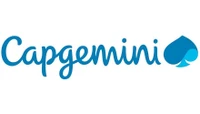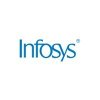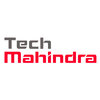
i
Capgemini
Filter interviews by
Capgemini Devops Engineer Interview Questions and Answers
22 Interview questions
CI/CD is a set of practices that automate software development and deployment processes, enhancing efficiency and reliability.
CI stands for Continuous Integration, where developers frequently merge code changes into a shared repository.
CD stands for Continuous Delivery, which ensures that code changes are automatically prepared for a production release.
CI/CD pipelines automate the testing and deployment processes,...
Accessing onprem artifacts in public cloud involves setting up a secure connection and using appropriate tools.
Establish a secure VPN connection between onprem and public cloud
Use tools like AWS Direct Connect or Azure ExpressRoute for dedicated connections
Utilize hybrid cloud solutions like AWS Outposts or Azure Stack for seamless integration
Google Cloud Platform (GCP) offers a wide range of features for DevOps engineers to utilize.
Compute Engine for virtual machines
Cloud Storage for object storage
Cloud Functions for serverless computing
Cloud Pub/Sub for messaging and event-driven systems
Cloud Logging for monitoring and logging
Cloud Monitoring for performance monitoring
Cloud Deployment Manager for infrastructure as code
StatefulSet is used for stateful applications with stable, unique network identifiers. Deployment is for stateless applications.
StatefulSet manages stateful applications with stable, unique network identifiers
StatefulSet maintains a sticky identity for each pod, even if it is rescheduled
Deployment is used for stateless applications that can be easily replaced or replicated
Deployment manages stateless pods and can ...
What people are saying about Capgemini






DevOps in cloud refers to the practice of using DevOps principles and practices in a cloud computing environment.
Automating infrastructure provisioning and management
Continuous integration and deployment
Monitoring and logging in cloud environments
Collaboration between development and operations teams
Using tools like AWS, Azure, or Google Cloud Platform
In Terraform, 'count' is used to create multiple instances of a resource based on a single configuration, while 'for_each' is used to create multiple instances of a resource based on a map or set of strings.
Count is used with a static number to create multiple instances of a resource.
For_each is used with a map or set of strings to create multiple instances of a resource.
Count is more suitable for creating a fixed...
Integrating Git involves setting up a version control system for managing code changes.
Install Git on the local machine
Create a new repository on Git hosting service like GitHub or Bitbucket
Clone the repository to the local machine using 'git clone'
Add files to the repository using 'git add'
Commit changes using 'git commit'
Push changes to the remote repository using 'git push'
Pull changes from the remote repositor...
Webhooks are a way for applications to communicate with each other in real-time by sending HTTP requests.
Webhooks allow applications to receive real-time notifications or data updates.
They eliminate the need for constant polling by providing a push mechanism.
Webhooks are commonly used in various scenarios like integrating third-party services, triggering events, or automating workflows.
Examples include receiving n...
Continuous integration in Jenkins is achieved through the use of build triggers and pipelines.
Jenkins allows developers to set up build triggers that automatically start a build process whenever changes are pushed to the repository.
Build pipelines can be created in Jenkins to define the stages and actions required for continuous integration.
Jenkins can integrate with version control systems like Git to fetch the l...
Jenkins is an open-source automation server with features like continuous integration, build automation, and deployment.
Continuous integration and delivery
Build automation
Distributed builds
Extensibility through plugins
Easy installation and configuration
Support for various version control systems
Integration with other tools and services
Monitoring and reporting
Security and access control
Capgemini Devops Engineer Interview Experiences
22 interviews found
(2 Questions)
- Q1. Questions on codedeploy
- Q2. Ansible related questions
(2 Questions)
- Q1. Questions about deployment
- Q2. Terraform questions
(2 Questions)
- Q1. Deployment related
- Q2. Explain my previous project
I applied via Naukri.com and was interviewed in Sep 2024. There was 1 interview round.
(2 Questions)
- Q1. Features used ingcp
- Q2. Difference between statefulset and deployment
Skills evaluated in this interview
(2 Questions)
- Q1. Architecture of Kubernetes
- Ans.
Kubernetes is an open-source container orchestration platform that automates the deployment, scaling, and management of containerized applications.
Kubernetes follows a master-slave architecture with a master node that controls multiple worker nodes.
Master node includes components like API server, scheduler, controller manager, and etcd.
Worker nodes run containers and include components like kubelet, kube-proxy, and con...
- Q2. Questions around Kafka, Git, Github comands
Skills evaluated in this interview
(2 Questions)
- Q1. What is devops in cloud
- Q2. What is kubernetes
(2 Questions)
- Q1. Salary expectation
- Q2. Why u left last company
Skills evaluated in this interview
(1 Question)
- Q1. How would you access onprem artifacts in public cloud
- Ans.
Accessing onprem artifacts in public cloud involves setting up a secure connection and using appropriate tools.
Establish a secure VPN connection between onprem and public cloud
Use tools like AWS Direct Connect or Azure ExpressRoute for dedicated connections
Utilize hybrid cloud solutions like AWS Outposts or Azure Stack for seamless integration
Skills evaluated in this interview
(2 Questions)
- Q1. Basic question related to DevOps
- Q2. Cicd arch and python
I appeared for an interview in Mar 2025, where I was asked the following questions.
- Q1. Explain what is CI/CD
- Ans.
CI/CD is a set of practices that automate software development and deployment processes, enhancing efficiency and reliability.
CI stands for Continuous Integration, where developers frequently merge code changes into a shared repository.
CD stands for Continuous Delivery, which ensures that code changes are automatically prepared for a production release.
CI/CD pipelines automate the testing and deployment processes, redu...
- Q2. What is k8
I applied via Recruitment Consulltant and was interviewed in Jan 2024. There was 1 interview round.
(10 Questions)
- Q1. 1. What is CI/CD
- Ans.
CI/CD stands for Continuous Integration/Continuous Deployment. It is a software development practice that enables frequent and automated code integration, testing, and deployment.
CI/CD is a set of practices and tools that automate the process of integrating code changes into a shared repository, testing them, and deploying them to production.
Continuous Integration involves regularly merging code changes from multiple d...
- Q2. 2. Will you write groovy script in Jenkins pipeline
- Ans.
Yes
Groovy scripts are commonly used in Jenkins pipelines for automation and customization
They allow for more complex logic and functionality compared to declarative pipelines
Examples include defining stages, steps, and conditions in the pipeline script
- Q3. 3. What is Docker
- Q4. 4. What is kubernetes
- Q5. 5. How will continues integration will happen in Jenkins
- Ans.
Continuous integration in Jenkins is achieved through the use of build triggers and pipelines.
Jenkins allows developers to set up build triggers that automatically start a build process whenever changes are pushed to the repository.
Build pipelines can be created in Jenkins to define the stages and actions required for continuous integration.
Jenkins can integrate with version control systems like Git to fetch the latest...
- Q6. 6. What are the features in jenkins
- Q7. 7. What is kubernetes
- Q8. 8. What is continuous integration
- Q9. 9. What is the purpose of webhook
- Ans.
Webhooks are a way for applications to communicate with each other in real-time by sending HTTP requests.
Webhooks allow applications to receive real-time notifications or data updates.
They eliminate the need for constant polling by providing a push mechanism.
Webhooks are commonly used in various scenarios like integrating third-party services, triggering events, or automating workflows.
Examples include receiving notifi...
- Q10. 10. Git commands
Interview Preparation Tips
Skills evaluated in this interview
I applied via Naukri.com and was interviewed in Apr 2024. There were 2 interview rounds.
(1 Question)
- Q1. Question around azure devops
(1 Question)
- Q1. Question around azure devops
(1 Question)
- Q1. Introduction, DevOps Tools, Notice Period, Location
Capgemini Interview FAQs
Some of the top questions asked at the Capgemini Devops Engineer interview -
Tell us how to improve this page.
Capgemini Interviews By Designations
- Capgemini Analyst Interview Questions
- Capgemini Consultant Interview Questions
- Capgemini Software Engineer Interview Questions
- Capgemini Senior Consultant Interview Questions
- Capgemini Associate Consultant Interview Questions
- Capgemini Software Developer Interview Questions
- Capgemini Senior Analyst Interview Questions
- Capgemini Senior Software Engineer Interview Questions
- Show more
Interview Questions for Popular Designations
- Senior Engineer Interview Questions
- System Engineer Interview Questions
- Project Engineer Interview Questions
- Engineer Interview Questions
- Senior Devops Engineer Interview Questions
- AWS Devops Engineer Interview Questions
- Cloud Engineer Interview Questions
- Cloud Devops Engineer Interview Questions
- Show more
Overall Interview Experience Rating
based on 23 interview experiences
Difficulty level
Duration
Interview Questions from Similar Companies
Capgemini Devops Engineer Reviews and Ratings
based on 152 reviews
Rating in categories
Bangalore / Bengaluru
7-10 Yrs
₹ 10-18 LPA
|
Consultant
59.5k
salaries
| ₹8.9 L/yr - ₹15 L/yr |
|
Associate Consultant
51.2k
salaries
| ₹4.5 L/yr - ₹10 L/yr |
|
Senior Consultant
50.9k
salaries
| ₹12.5 L/yr - ₹21 L/yr |
|
Senior Analyst
22.6k
salaries
| ₹3.1 L/yr - ₹7.5 L/yr |
|
Senior Software Engineer
21.8k
salaries
| ₹4.7 L/yr - ₹13.4 L/yr |

Wipro

Accenture

Cognizant

TCS
- Home >
- Interviews >
- Capgemini Interview Questions















